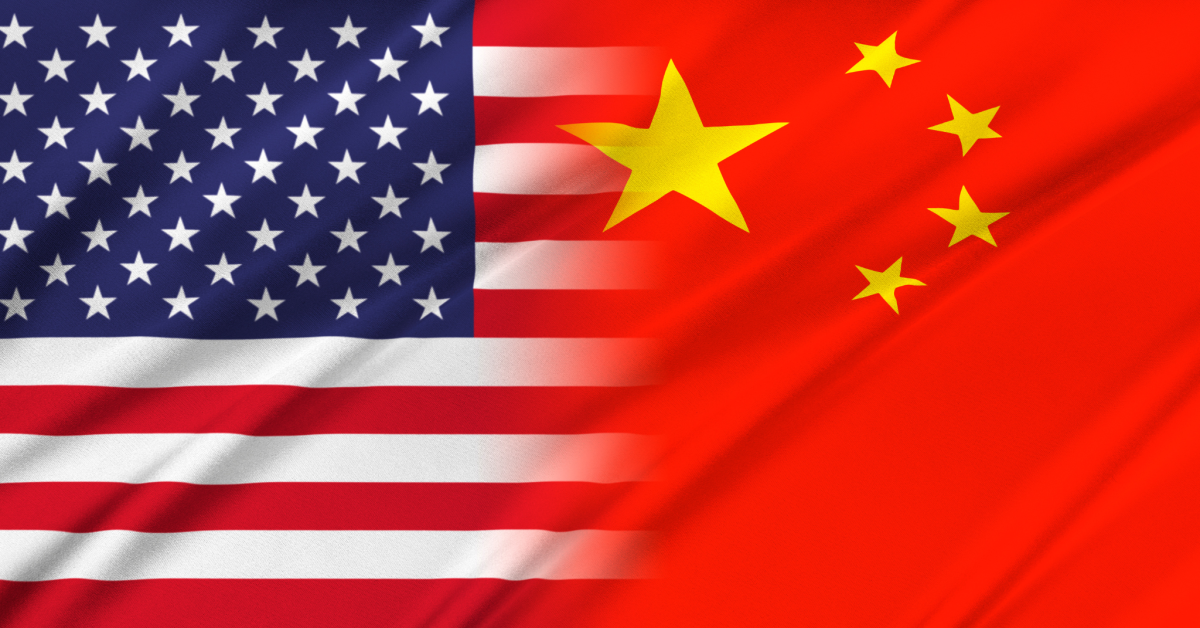After months of heightened tensions and reciprocal trade measures, China and the US have entered a tentative phase of easing in their economic relationship. The three rounds of trade talks held in Geneva, London, and Stockholm between May and July 2025 did not yield a comprehensive agreement, but they produced incremental progress: an initial 90-day tariff truce, mutual suspension of non-tariff retaliatory actions, a framework for structured dialogue, and a renewal of the truce through November 10.
These developments, while modest and limited in scope, have helped de-escalate immediate risks and created space for more substantive negotiations on key issues where consensus remains elusive—fentanyl-related tariffs, export controls on chips and rare earths, market access, and the bilateral trade gap.
The truce buys time, but not certainty. Its value lies in enabling a shift from reactive escalation to structured engagement. Yet the path forward remains uncertain, shaped by domestic political imperatives, strategic competition, and global economic volatility.
The following piece analyzes this fragile reset in China-US trade ties, highlighting the tariff truce’s short-term value, the political forces behind it, three priorities that will shape the next phase of engagement, and how multinationals in China should be preparing.
From Escalation to Tactical Reset
Following the Stockholm dialogue, both governments confirmed a 90-day extension of the tariff truce—20% on fentanyl-related imports and 10% reciprocal tariffs on broader goods—effective August 12. The announcement, signed by President Trump on August 11, came just hours before the deadline. While widely anticipated, the timing and coordinated messaging underscore a shared interest in preserving diplomatic space.
This extension marks a further tactical reset in bilateral trade negotiations. It follows three months of formal dialogue—Geneva, London, and Stockholm—and undisclosed engagements during those rounds that gradually shifted the tone from confrontation to cautious engagement. A pivotal moment came in early June, when President Xi and President Trump held a 90-minute call reaffirming their commitment to the “Geneva consensus,” paving the way for the “London framework.” These talks helped restore a sense of normalcy to bilateral exchanges, reintroducing predictability into a relationship previously dominated by reactive measures and rhetorical escalation.
Still, this reset is not a strategic breakthrough. It extends a narrow but meaningful window for deeper negotiations on politically charged and economically consequential issues—most notably, the 20% US tariffs on Chinese fentanyl precursors, which remain crucial for Beijing despite broader tariff reductions;
export controls on semiconductors and rare earths, which have become key bargaining chips; and the persistent bilateral trade imbalance, which continues to fuel protectionist sentiment in Washington. These topics are not only central to the trade relationship but also emblematic of the broader contest, and their resolution will require more than procedural engagement—they demand strategic compromise.
Whether this pause leads to progress or simply delays further escalation will depend on the political calculus in both capitals and the ability of negotiators to convert procedural engagement into durable outcomes.
Domestic Calculus
Both Washington and Beijing are navigating complex domestic landscapes that shape their external postures. In the US, trade policy is increasingly intertwined with electoral politics and national security narratives. The administration’s tariff strategy—though disruptive—has galvanized domestic support and positioned trade as a lever of strategic competition. Recent decisions, such as permitting key EDA software firms to resume exports to China and easing restrictions on companies like Nvidia and AMD (with conditions such as revenue-sharing with the US government), reflect Washington’s dual objectives: maintaining economic leverage while signaling political intent.
China, meanwhile, is pursuing a dual-track approach that blends tactical restraint with strategic assertiveness. Following the Geneva talks, Beijing paused retaliatory measures against 17 US entities and suspended select export controls—gestures that have remained in place under the renewed truce. Additionally, after the London meeting, China’s market regulator suspended its antitrust investigation into DuPont, signaling a broader intent to de-escalate tensions and avoid deeper economic confrontation. The most consequential outcome was the establishment and implementation of a joint working mechanism for continued dialogue, which China views as a way to reduce uncertainty, compartmentalize economic and political tensions, and buy time to address domestic pressures.
The economic rationale behind the truces is clear. For China, the latest pause supports efforts to stabilize exports ahead of the US holiday season—especially in key consumer categories like electronics, apparel, and toys. The timing aligns with peak shipping windows for Christmas retail, helping Chinese exporters avoid steep tariff hikes and maintain competitiveness.
For the US, the truce provides extended breathing room to ease inflationary pressures and stabilize supply chains. By delaying tariff increases, the administration helped retailers avoid cost spikes, reduce price volatility, and plan inventories more strategically. The move also reflects a broader effort to decouple trade tensions from domestic economic management—preserving consumer confidence while leaving space for diplomatic recalibration.
Looking Ahead
As China and the US cautiously advance their trade dialogue, three priorities are set to shape the next phase of engagement:
- Tariffs and strategic sectors: Negotiators are focused on recalibrating tariff frameworks, with rare earths, semiconductors, and agriculture (namely soybeans) at the center. China continues to leverage its dominance in rare earths, while the US has announced broad-based tariff hikes, including a 100% duty on semiconductors and new levies on pharmaceuticals. Starting August 29, the US will also suspend duty-free de minimis treatment for low-value shipments at $800 or less, impacting cross-border e-commerce and signaling limited prospects for tariff relief. Given recent tariff agreements reached with other economies and considering the core objectives of the Trump administration’s global trade strategy, the likelihood of significant tariff reductions on Chinese goods remains low.
- Non-trade barriers: Both sides are intensifying scrutiny over non-tariff barriers. US export controls continue to restrict Chinese access to advanced technologies, with expanded enforcement on transshipment and outbound investment. China is tightening rare earth export licensing and refining customs regulations to prevent origin manipulation.
- National security: Clarifying the boundary between trade and national security remains critical. US tariffs linked to Chinese purchases of sanctioned Russian oil and China’s emphasis on energy sovereignty underscore the geopolitical overlay. While both sides are attempting to compartmentalize these issues, escalation risks remain if negotiations stall.
Implications for Businesses: Agility Amid Ambiguity
For multinational companies operating in China, particularly US firms, the current environment demands strategic agility. The tariff truce and ongoing negotiations offer temporary relief, but the risk of re-escalation remains. Businesses should stay informed, flexible, and proactive in how they engage with key stakeholders, while preparing for a landscape defined by selective cooperation and evolving rules of engagement.
For US business in China, the extension signals a temporary reprieve from volatility, but not a return to stability. Companies are advised to use this period to reassess exposure, engage with regulators, and prepare for multiple scenarios—including renewed escalation or incremental liberalization.
Multinational firms must balance short-term gains and long-term strategy. In the near term, they should optimize trade contract terms and enhance supply agility to respond to potential tariff shifts. Over the long term, they should continue to strengthen relationships with Chinese partners while advancing global diversification to mitigate geopolitical risks.
Key areas of focus:
- Regulatory Engagement: Maintain open lines with Chinese regulators and industry associations to anticipate and adapt to policy changes.
- Compliance and Reputation Management: Navigate heightened scrutiny, including conditions tied to export licenses and revenue-sharing mandates.
- Crisis Prevention and Response: Establish comprehensive crisis prevention and mitigation protocols to address real-time challenges such as Unreliable Entity List restrictions, sanctions, anti-dumping (AD), countervailing duties (CVD), and anti-discrimination measures.
- Supply Chain Diversification: Explore sourcing alternatives in emerging new markets and other low-tariff jurisdictions to reduce exposure.
The path forward lies in strategic patience and competitive positioning. While bilateral tensions persist, the relationship is not collapsing. Companies that invest in understanding policy signals, diversifying risk, and engaging constructively with both governments will be best positioned to navigate the evolving landscape.
Appendix: Summary of the Three Round of Talks
Geneva: Breaking the Tariff Deadlock (May 10–11, 2025)
The Geneva talks marked the first substantive engagement since the reimposition of reciprocal tariffs earlier in the year. Both sides agreed to a 90-day truce, reducing US tariffs on Chinese goods from 145% to 30% and China’s retaliatory tariffs from 125% to 10%. The agreement also suspended select non-tariff countermeasures and established a consultation mechanism for ongoing dialogue. While provisional, the consensus of the Geneva meeting broke the deadlock and signaled a mutual willingness to de-escalate.
London: Building a Framework for Managed Competition (June 9–10, 2025)
The London round built on Geneva’s momentum and produced a non-binding framework to guide future discussions. Key elements included phased tariff reductions, coordination on investment screening, and a commitment to resume bilateral investment treaty negotiations. The framework also addressed export controls, with China agreeing to streamline rare earth export licensing and the US signaling relaxation of certain high-tech restrictions. The “hard-won” outcomes agreed at London talks introduced structure and predictability into the economic relationship.
Stockholm: Extending the Truce, Expanding the Agenda (July 28–29, 2025)
The Stockholm talks yielded the most tangible outcome: a 90-day extension of the tariff truce, effective August 12. The agenda broadened to include macroeconomic coordination, rare earth exports, dual-use technology, and energy trade. This round reinforced the institutionalization of dialogue and opened the door to further progress on more complex issues.
Materials presented by Edelman’s Public & Government Affairs experts. For additional information, reach out to Cynthia.Xing@Edelman.com



